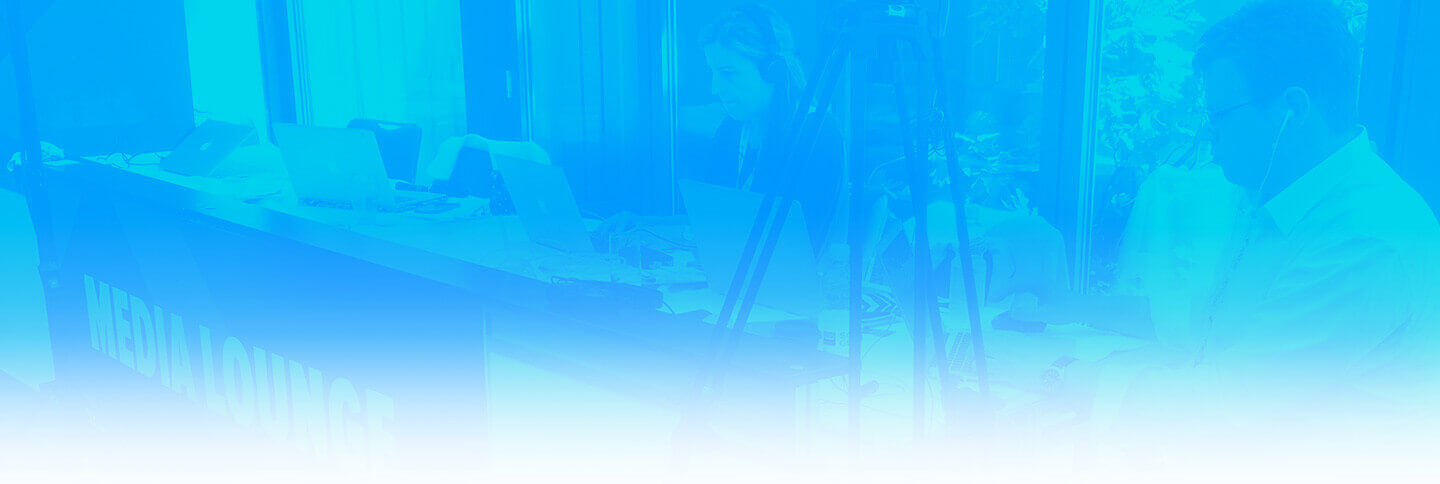#Coronacomms: Turn your virtual presence into an engaging experience
As spare rooms, kitchens or home offices become the new workspaces during lockdown, your teams’ personal lives are increasingly being put on show during virtual meetings and conferences.
It may be that in a few weeks or months’ time, we will be able to return to having the luxury of separation between work and home – as well being able to talk to each other face-to-face. But for the time being, this is how things are and this is where we are staying.
Whether it’s a meeting or presentation, the content of what you have to say should always be your most important consideration. But in this new world of the virtual and online, it’s becoming increasingly important to give some thought to how to make the most of the screen you will invariably be appearing on.
With that in mind, here are some tips to help you make it easy for your audience to see and hear you so they will find it easy to pay attention and you in turn will find it easier to leave a lasting impression.
Sound as good as you look
Broadcasters will tell you that viewers would rather watch a substandard video with good sound over good picture quality and bad sound. The reason is simple – if your audience can’t hear what you’re saying you’ll lose their focus.
This is why it’s important to base yourself in the quietest possible place available. If you’re recording something to be shared as part of a virtual event, avoid recording it in echoey rooms or near banging doors – keep all those off-screen noises to the absolute minimum. That includes putting all phones and other devices on silent.
If you have team members involved in multiple meetings and events (and who isn’t these days?), investing in a good quality headset is one easy way to improve the sound quality.
If you or your team are going to be addressing an audience virtually, stick to the TV broadcasting rules about clothing. Wear bright or block colours, avoid stripes and busy patterns, you don’t want your audience to be distracted by your appearance.
Recording
If you’re doing a pre-recorded piece, most phones are fitted with perfectly good cameras and microphones, and as such, are more than suited to the job. Position the phone somewhere steady at eye level. It can help to have some Blu-Tack to hand, to keep it in place. It’s vital you look at the little dot, the camera, not the screen – no matter how tempting it is to stare at the image of the other speaker or speakers, or even at yourself. Also, encourage people to do a short test first to make sure their eyes can be seen and voices can be heard clearly.
Experiment with tech
For live events and virtual conferences, it’s a good idea to train people to be familiar with how to use Zoom, Teams, Skype or whichever platform they’ll be using.
Some platforms – like Zoom and Teams – have features that can enhance appearances at the click of a button. It’s possible to add virtual backgrounds or to obscure domestic backgrounds. This is great, but it is not failsafe. People can disappear into a virtual background if they move around.
Going green
It doesn’t have to be a professional green screen. It doesn’t even need to be green. Any bright, even colour can work in principle. The reason green is traditionally used was because it’s a colour that people tend not to wear. If you are going to use a different colour screen, avoid whites, creams or browns – anything too close to skin tones.
One advantage of a green screen, especially for your presenters, is having the freedom to show and present branded information in a slicker way. With the rise of the YouTuber phenomenon, it’s become very easy to find DIY screen ideas or affordable kits for home use.
Boost your performance in front of the camera
While it’s distracting to see yourself on the screen in front of you, we all need to practise moving our focus to the camera. Find the little dot on your computer or phone and remember that is where to focus your attention.
Also, cameras can suck the life out of anyone in front of them. This is something performance coach and communications trainer Charlotte Hume explained in her interview on Formative’s virtual event, Insight Live. To counter that, you need to dial-up the way you communicate.
Imagine how you would normally be if there was someone standing in front of you and be the same – to smile, have good eye contact and use natural gestures. Use your whole body, don’t be afraid of gestures, become a little more animated than you might ordinarily.
Focus on what is controllable
With a plethora of different platforms out there to choose from, all with their own strengths, weaknesses and specialities, it’s wise to check with your IT department, to see what company policy is on preferred solutions.
When you can’t control the internet speed, the dog barking or the kids playing loudly in the room next door, it makes sense to control what you can. The closer you are to your router, the easier it will make life online seem smooth and seamless – even if the truth is a little different in a busy household.
For crucial meetings and events do what you can to avoid loss of connection. This is doubly important where the host of the session is concerned. If their connection fails the whole meeting or event could go down. Where possible, get them to connect their computer to their router with an ethernet cable rather than rely on the WiFi.
Ultimately, you’re trying to create the best environment so you can make the best possible connection with the outside world. And that’s something that’s so crucial for our ongoing communications with family, friends and colleagues.
Mike Sedgwick of By This River, is a video director and long-time associate of Formative Content. He has produced brand films, animations and interviews for the past 20 years. Connect with him on LinkedIn.

Related Articles

AI won’t destroy SEO – but it will massively change the game
“The reports of my death are greatly exaggerated,” Mark Twain is said to have told a newspaper reporter.

Where creativity and technology meet: a designer’s view on artificial intelligence
My favourite things usually exist where creativity and cutting edge technology meet.

What does the launch of Twitter-alternative Threads mean for B2B marketers?
Threads, a Meta-owned alternative to Twitter, is set to launch on Thursday.

Protecting your brand in the age of generative AI
Imagine a deep fake video supposedly of your CEO making a market-moving statement going viral on the web.



